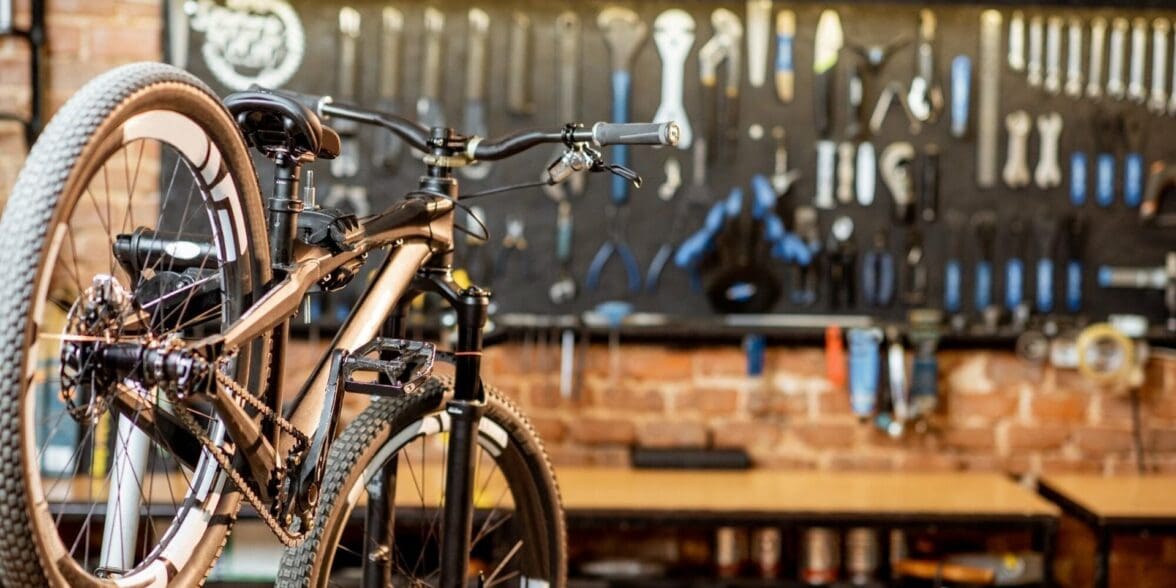Welcome to our guide on how to perform your own DIY eBike maintenance at home. Outside of accounting for electrical components, maintenance remains much the same as a traditional bicycle. Knowing the basics of bicycles will go a long way when dealing with an electric model; from repairing punctures and wheels to brake cables and more.
Although we recommend learning all of these maintenance techniques, here are a few of the most important:
Pre-ride eBike checks:
- Check your chain. This component should always be kept clean and well-lubricated. Checking your chain and drivetrain is especially important after each ride to maximise their lifespan. This is important for both mid-drive and hub-drive eBikes (although some mid-drive model designs have no chain).
- Look over the battery. This step is straightforward: ensure your battery is fully charged before riding for long distances. Charging your battery after each ride will keep it operating more efficiently, whilst leaving you the freedom of a full ride at a moment’s notice. We will discuss battery protection further on in this article, so stay focused!
- Check your tires. Before any journey, we highly recommend checking over your tires. Ensure that you possess ample air pressure and that both tires are fully inflated, with no punctures and sufficient tread. Puncture repair kits are readily available online. In general, most bike tires last 1000–3000 miles before requiring a replacement.
- Test brakes before riding. An often overlooked step that only takes a minute, checking your brakes before each ride is essential. After continuous use or particularly wet weather, brakes can become unresponsive and even seize up. We recommend testing your brakes with a sharp, emergency stop before setting out for a long ride.
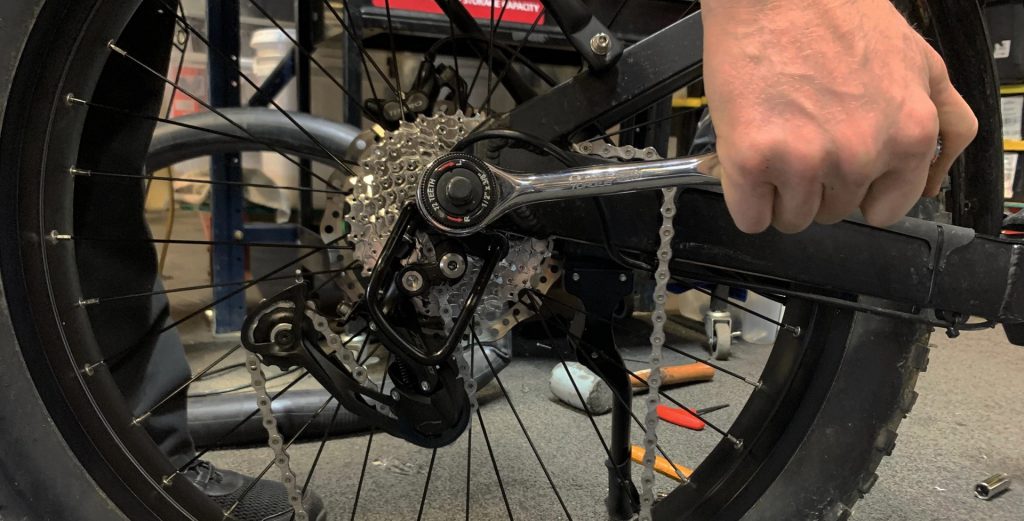
Undertaking eBike Maintenance:
Knowing what to look for is ideal—but having the right tools for the job is essential. While not all of the tasks listed here are essential for keeping your eBike running, they should all prove highly useful eventually.
Choosing the cost-effective option for most of these tools is fine, although not for oil. We advise using only good chain oil, with dry lube in the summer and wet lube in the winter.
When undertaking maintenance of your electric bike, a bike work stand proves very convenient and comfortable to work on. Wearing a pair of nitrile gloves is also a great way to keep clean and avoid getting covered in oil and lubricant. Here are the rest of our recommended tools for your workshop:

Tools Required:
- Allen keys. Hexagonal and Torx keys remain the most common variants for tightening parts of the bicycle—from the handlebar to the seatpost, saddle clamp, stem, and others. Riders will find Allen keys between 4–6mm work for most eBike repairs.
- Torx keys. These tools are ideal for tightening or undoing six-pointed/star-shaped bolts, screws, and other fasteners. Torx keys are usually sold as a set, with various sizes to suit all manner of Torx-indented fasteners.
- Tire/shock pump. A tire pump is necessary for all riders to fill up and maintain tire air pressure. On the other hand, a shock pump is essential for most mountain bikers and off-road riders alike. These pumps are designed to set or maintain air pressure in air-sprung fork and shock suspension systems, keeping them robust and responsive to rougher terrains.
- Lubes & degreasers. Bike degreasers prove useful for shifting any stubborn oil and grease from components like the drivetrain. This is followed up by applying either dry or wet lubricant to keep everything running smoothly, as well as offering an additional layer of protection from the elements.
- Chain breaker. This tool is quite self-explanatory and will only really see use either when you require a specific link or it’s time to replace your old chain. The vast majority of riders will use these for the latter, which make the entire process very easy and straightforward.
- Quick link pliers. A useful tool designed to easily remove and replace many types of chain links. They prove very effective at applying “quick links”, making repairing a broken chain a very simple process. Watch this video for more information on how to replace a chain using quick links.
- Cable cutters. Another self-explanatory tool. Cable cutters prove essential when repairing, replacing or outright removing and cabling on your eBike. We highly advise double-checking all cables before cutting, as you could potentially destroy sensitive electrical components otherwise.
- Chain whip. A chain whip is used to hold a bike cassette (bike hubs) still, preventing it from moving or “freewheeling” whilst you snap the lockring loose. You’ll find this tool integral if you plan to replace any of the hubs on your eBike. We recommend this Shimano compatible chain whip.
How to Clean an Electric Bike:
Cleaning your eBike effectively is quite a straightforward process, but it’s important to get it right. It’s often overlooked, but it can protect the frame, motor, brakes and other components from damage.
Keeping your eBike clean and in working order will have it looking and running like new all year round. Here are our top tips for cleaning your electric bike:
Battery & Drivetrain
Firstly, always remove the battery (if possible) before cleaning. This helps to prevent any unnecessary damage. Once that’s done, start by degreasing the drivetrain first, which is typically located in the rear wheel centre.
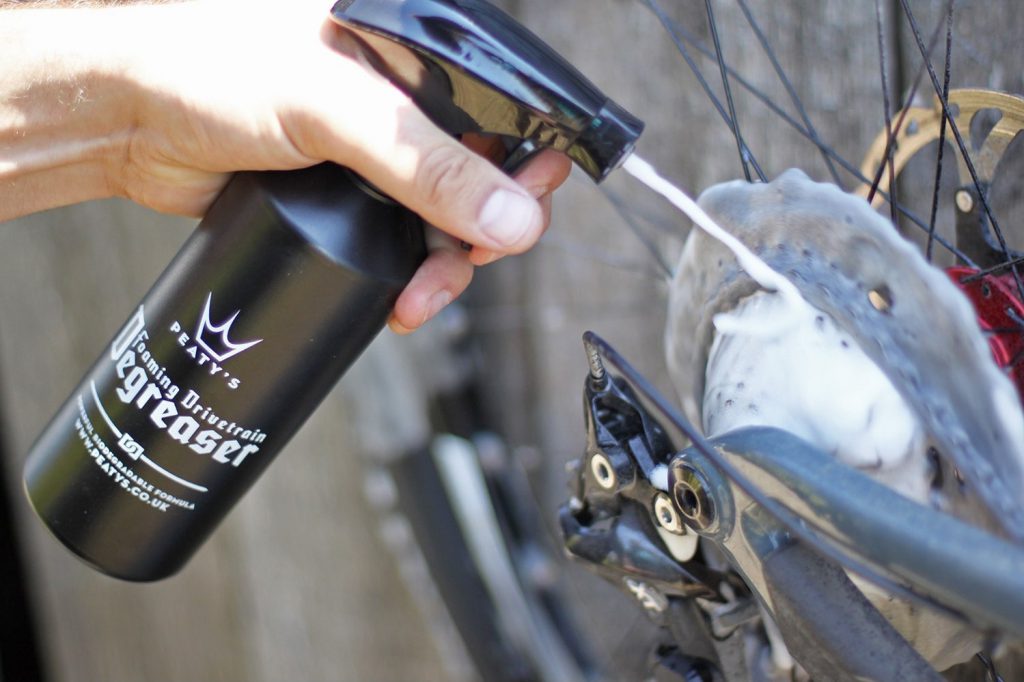
This will prevent grease and dirt from spreading to the rest of the frame during the cleaning process, also achieved with a drivetrain cleaning spray. Apply a light amount of spray while carefully avoiding any other components, then let it sit for ~10 minutes before wiping off.
How to Clean Disc Brakes
The next important component to clean is disc brakes, which remain essential for keeping your stopping distance at a minimum. We cannot stress enough the importance of keeping your brakes in good, working order—it could save your life! When cleaning disc brakes, we recommend using a suitable tool for the disc rotors; either spraying with brake cleaner or wiping it down.
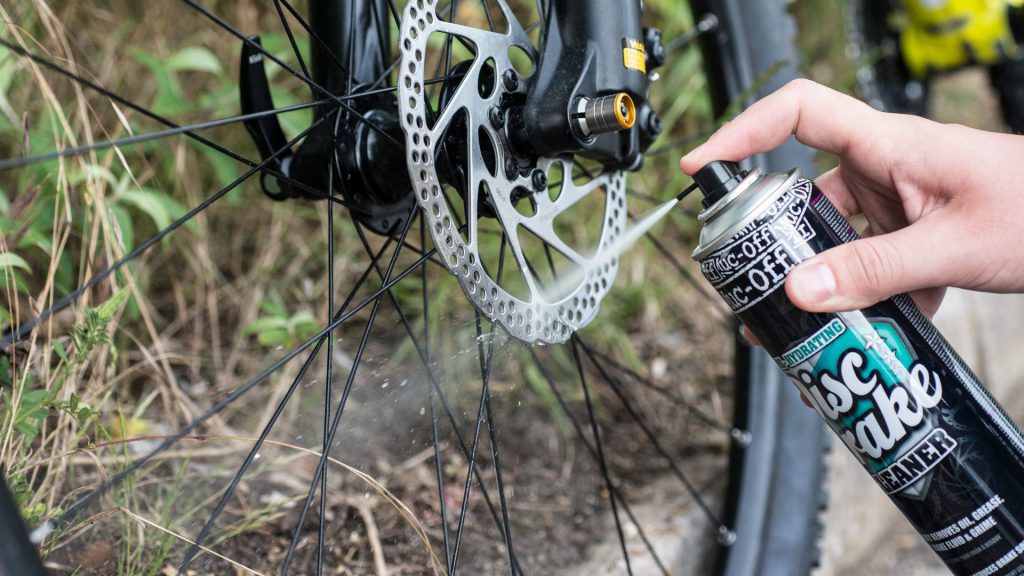
If you’re using soapy water to wash the brakes, we advise wiping them down after, as this can cause them to fade over time. Another additional layer of protection is offered by ‘Muc-Off’, with their washable neoprene protective covers for disc brakes. Although this won’t always prevent damage in a crash, it will keep the elements off your lovely brakes and combat corrosion.
Be Aware of Sensitive Components
When using degreaser, take special care not to apply an excessive amount near the motor or any casings. Grease is essential for keeping components lubricated and functional, so using too much near the motor risks removing essential grease from the drive bearings.
As a general rule, be careful when applying degreaser near any component, including suspension bearings and wheel hubs. Lastly, it is preferable (but optional) to remove the wheels outright before cleaning; making the overall task much easier.
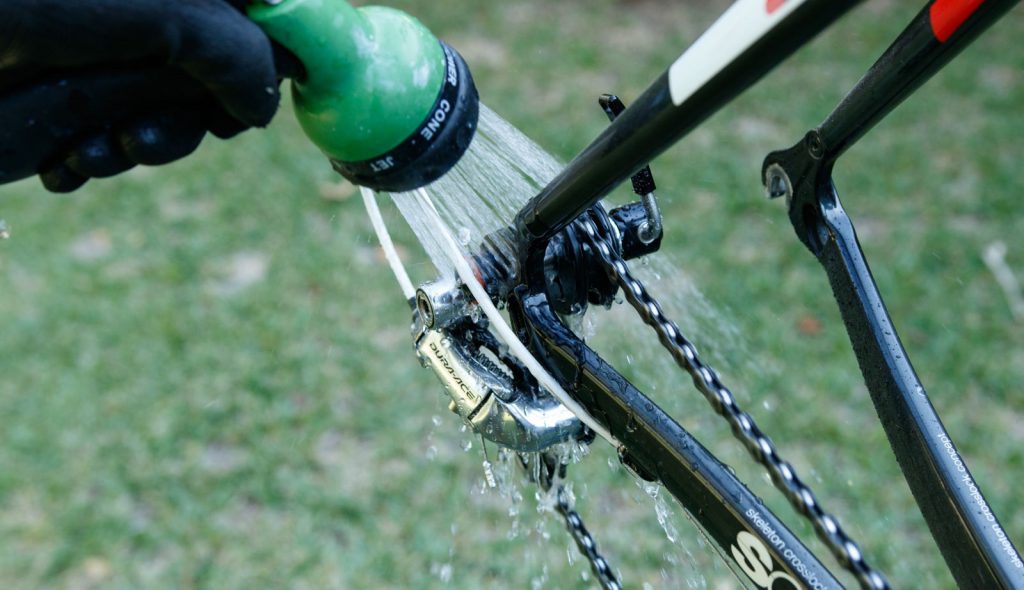
eBike Maintenance Tips:
Don’t pressure wash/avoid jet washing. This potentially drives out grease that lubricates bearings, alongside compressing water into the internals and corroding components. We highly recommend standing a good distance away and not using too much power, if you must pressure/jet wash.
Lubricate the cabling. Many brake and shift cables possess a plastic lining built into the housing, eliminating the need for lubrication. However, if this is not the case, use dry lube regularly on the cabling. Avoid using wet lubricant, which causes dust and dirt to stick to the surface, potentially making cables seize up.
Get a bike cleaning kit. The tools included in these kits will contain everything you need to keep your eBike running in pristine order and looking great. Containing a number of specialist brushes, these bike cleaning kits come highly recommended to anyone looking to take good care of their electric bike.
Spoke tension. For hub motor eBikes, spoke tension will prove an eventual problem, due to the added stress of the motor force. After a few years of usage, riders should expect some issues to occur with their spokes and may even need to replace the wheel.
Rust protection. Avoiding rust and corrosion is fairly straightforward. As previously mentioned, staying clear of slush and saltwater is essential, along with cleaning after each ride. A number of corrosion inhibitor sprays are available if you’re looking for an extra level of protection; just avoid applying this spray directly to your tires or brakes.
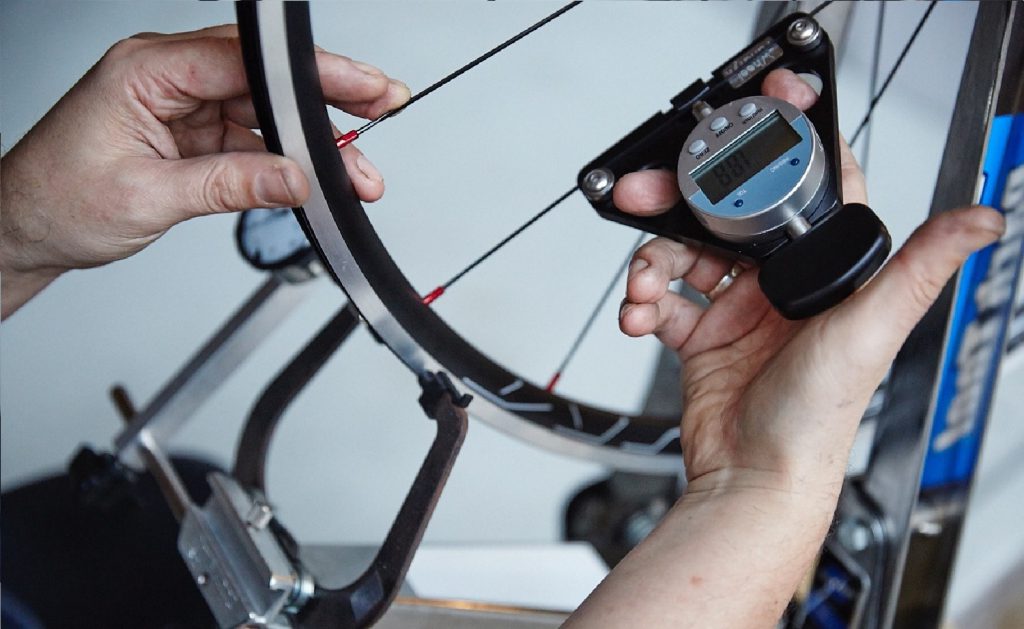
This is prevented through checking and adjusting the spoke tension, easily done during servicing. Watch this YouTube video for a full guide on replacing spokes, then learn about motor maintenance and battery protection below:
Motor Maintenance:
eBike motors are completely sealed units, usually claiming a good level of waterproofing. Despite this, we once again recommend avoiding high-pressure jet washing, as water can easily force its way into components and short-circuit them. Generally speaking, these motors look after themselves, with little need to take them apart.
In the event that your motor breaks, the best course of action is to contact the manufacturer; especially if your purchase is still covered by any warranty. If all else fails, disassembling and cleaning both the hub and mid-drive motors is quite straightforward (although not recommended).
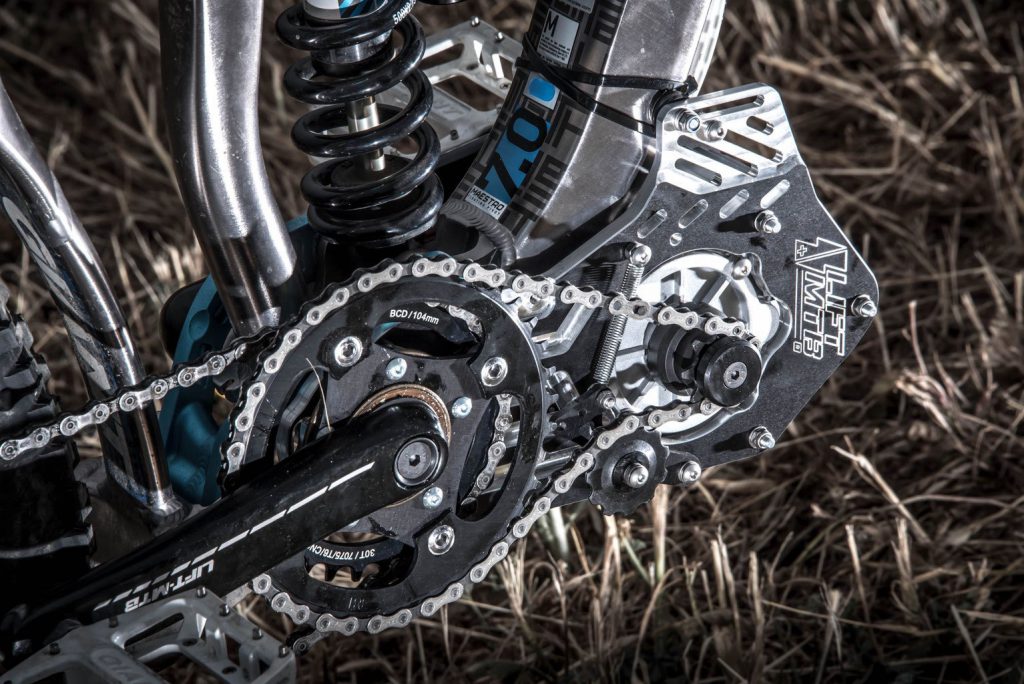
If you do have the knowledge, then by all means, open up your motor. The most common problems that require motor maintenance are:
- Dirt build-up
- Water ingress
- Loose bolts/bearings
- Increased noise
- Resistance and other malfunctions
To conclude, simply keeping the motor housing clean, avoiding excessive use, and regularly observing for damages is the most an average rider can do for motor maintenance. Only attempt to undertake more involved tasks yourself if you have the correct tools and knowledge. Continue reading to learn all about battery protection below.
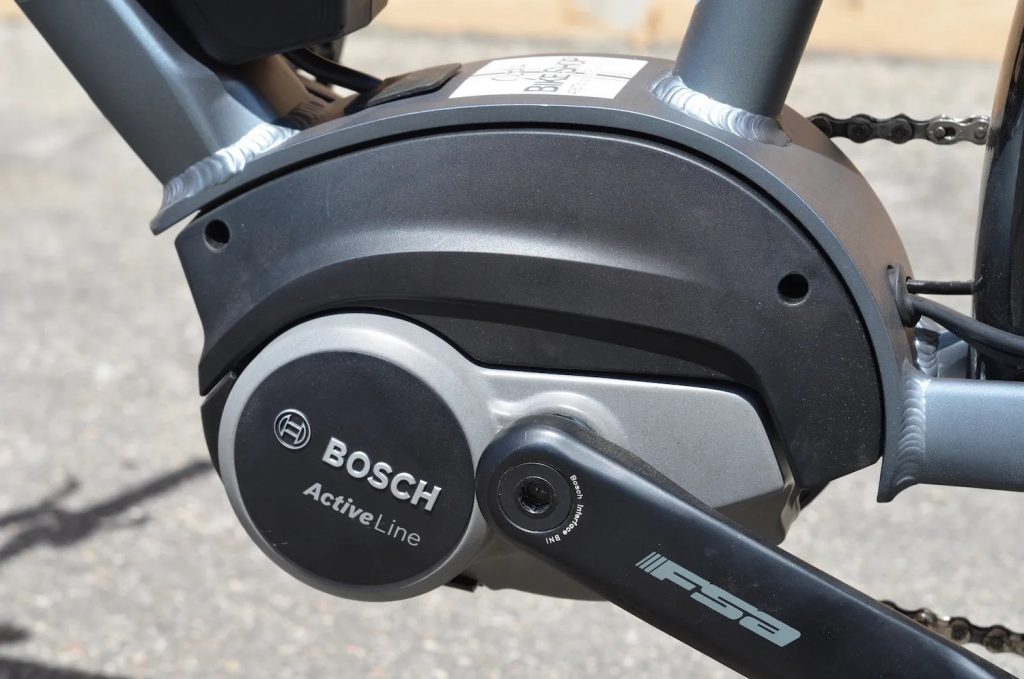
Battery Protection:
As mentioned, removing the battery before cleaning is essential, although this is not always possible. If integrated within the frame, carefully wash with a bucket of water or hose, taking care to avoid high water pressure or any ingress.
For optimal performance and lifespan, fully charge the battery after every ride. For bikes with removable batteries, ensure that the battery has been clipped into place and is locked into the frame. If you are storing your eBike for an extended period of time without use, we recommend storing the battery and bike frame separately.
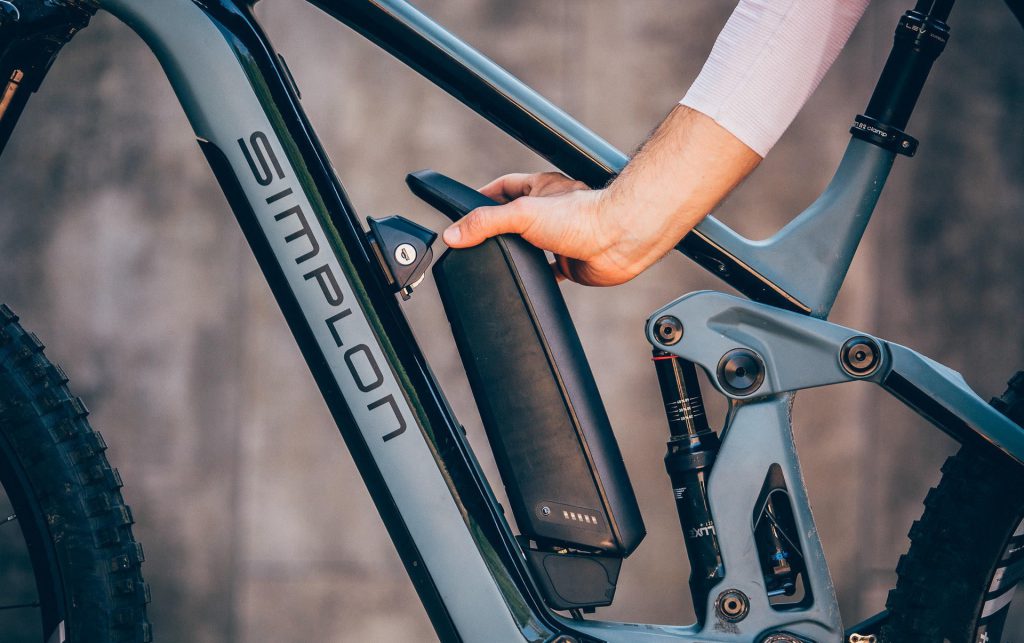
We advise storing the battery at around 50–60% capacity, so as to not exert it unnecessarily. Lastly, store it in a dry room with a warmth of at least 8 °C, preferably at room temperature (20-22 °C). Typically, batteries do not fare well in extreme conditions, which we’ve explained in detail in our ‘Winterizing Your PEV’ guide.
Other Basic Maintenance Tips:
- Run frequent searches for any loose bolts, spokes or other components.
- Use only the correct charger when powering the battery.
- Check for any software or firmware updates for your eBike, usually found on the manufacturer’s website.
- Don’t be afraid to go back to your dealership if any faults arise.
- Unless highly trained, never attempt to disassemble or fix any battery or motor yourself.
- Store in a dry, sheltered area. In winter months, move either the eBike or battery inside and keep them warm.
- Travel light. Any excessive weight will put extra strain on your bike motor, potentially causing damage. Always check the maximum weight capacity of your bike before riding.
- Keep your tires inflated to prevent uneven wear and save a lot of effort when riding.

Conclusion
Thanks for reading our guide on DIY eBike maintenance at home! Follow these tips and run frequent checks to ensure your eBike stays at its best. As always, we hope we answered all of your questions.
Spotted something we’ve missed, or have a suggestion? Leave us a comment; we’d love to hear from you. Alternatively, view our extensive PEV news section now for all the latest developments and informative pieces about personal electric vehicles!


